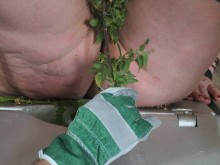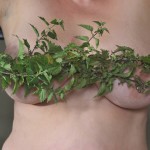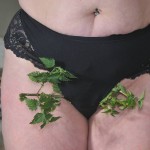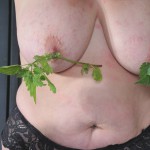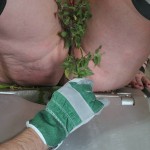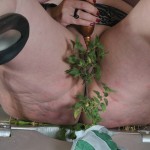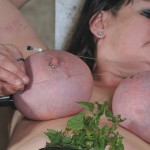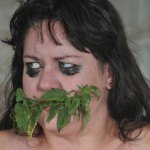Stinging Nettles BDSM
Stinging Nettles – Perfect Plant for BDSM Play
Stinging Nettles are mostly tall herbaceous plants (i.e. they die down in the winter), botanically in the genus Urtica. The best known is the Common Stinging Nettle (Urtica dioica), which is widespread in Europe and North America. Nettles are notable for their stinging hairs, which may be more or less confined to the stems, or clothe much of the entire plant. The flowers are minute and usually green, held together in hanging tassels or bunches. The plants sting on contact and the hairs can penetrate light clothing.
Pictures of Stinging nettles BDSM play by Shadow Slaves
Depending on individual opinion there are some 50 to 100 species of Stinging Nettle in the world. The Common Stinging Nettle (Urtica dioica) is the best known species in Europe and current opinion is that most native American nettles also belong to this species, though they differ in various ways from the European plant.
Related also are shrubs such as Urera in Africa, Laportea, of Africa and Australia, and the fearsome Stinging Trees (Dendrocnide) of Australia, S.E. Asia and the Pacific islands. The nettles are a worldwide group, nuisances to gardeners, foresters and unwary ramblers, painful components of African tribal initiation rites and, for us, a valuable contribution to our arsenal for consensual BDSM.
How do they sting?
The hairs are like miniature hypodermic needles, approximately 2mm long in the Common Stinging Nettle. The walls of the hairs are composed of silica, i.e. natural glass, and contact breaks the fragile tip of the hair. The hair is sharp enough to push into the skin, while at the same time, the venom, stored under pressure in the expanded base, travels up the hair and is injected into the skin through the broken tip. Hairs tend to be grouped together so a stung person will develop a localised rash of small, raised bumps.
Nettles in BDSM
Seriously, the point is rather laboured in this FAQ, but common sense does apply. Find out beforehand if the recipient knows if he/she has any unusual reaction. If he/she does not know, go carefully in the first session. Stay well within the recipient’s limits. Both top and bottom should be ready to stop the scene if there is any evidence of an unusual response. If there is no adverse reaction during or following a session, then subsequent sessions can be less inhibited, if so desired.
What is the value of nettles in BDSM?
Nettles can be used both in active and in passive play.
By active play I refer to the top actively using nettles as an instrument of erotic torment. Nettles are best used in a gentle stroking or dabbing action, which will cause those stinging hairs that come into contact with the recipient’s skin to work their effect, without damaging the remaining hairs. The number of hairs is, of course, finite, so a single stem will lose its effectiveness with use. Depending on the type and origin of the nettles (see earlier details), the top will want to ensure that the hairs on the stem as well as the leaves are used.
Taller stems can also be used as a gentle whip. The stems are tough and fibrous and will last for a while in this mode. They are light enough to be used with little inhibition, though the rough stem surfaces can cause very minor surface cuts and abrasions. Floggings with nettles in this way has a history of use for ‘inflaming the passions’ – there is some basis for this (see below). It is actually quite, um, exhilarating. The stings may be less effective when nettles are used in this mode, through the tips of the shoots may sting while “wrapping round” causing areas of greater inflammation along the sides of the body (an effect that may be either desired or avoided).
Doubled up, the stems have enough weight to start being effective on sensitive areas such as the testicles.
Leaves or pieces of nettle may also be inserted into the recipient’s clothing, though any effect will tend to be transient.
By passive play I refer to the useful fact that nettles can be effective by just being there. Once set up, no action is required from the top, it is up to the sub (recipient) to avoid the nettles.
For example, nettles can be used to limit the sub’s movement. Pots or vases of nettles can be so placed that the sub cannot move without being stung, perhaps as part of a conventional whipping scene, or simply to create a form of “bondage” without restraints. Nettles could, for example, be placed between a standing sub’s parted legs and just in front of the genitals and just behind the buttocks. Crueller scenarios might involve the sub not moving to avoid being stung more.
The tough stems of nettles can be strung together, so it is also possible to make a skirt or garland for the sub, one that would discourage unnecessary movement.
Other games might involve a blindfolded sub being required to carry out tasks, with vases of nettles forming part of an obstacle course. It should be obvious that any pots or containers used for such games should be shatterproof, and that water will cause neither danger nor damage if a vase is knocked over.
The assumption here is that the nettles are brought to the recipient. The alternative is possible. A woodland walk with a naked, blindfolded sub could be interesting. However, encounters could be a little surprising to early morning dog walkers or families out to enjoy the more conventional sights of the countryside, so to avoid court action and starring rôles in local newspapers, this is an idea perhaps better left to owners of private estates (who probably do this all the time anyway).
How should the top handle nettles?
With care. Leather or heavy rubber gloves are recommended, even though there are few hairs at the base of the stem where the top is likely to be holding the plant. The hairs are sharp enough to penetrate cotton or thin latex gloves, which presumably means they can also penetrate condoms.
It is often said that someone can hold a stem with their bare hand without being stung if they grip it firmly enough, the theory being that the hairs are broken before they can penetrate the skin. As can be told from the fixed expressions on faces of people demonstrating this, it tends not to work.
I have found them disappointing. Why could that be?
The venom is held in the hairs under pressure, so that it can be injected into the skin when the tip of the hair is broken. If pressure (“turgor”) falls within the plant, the stinging hairs become less effective. Nettles should be as fresh as possible, or if picked sometime beforehand, should be kept in a vase of cold water. They start to lose their effect in a warm room or in contact with a warm body (so leaves pushed into undergarments may not work as well as expected). Remember also that the number of hairs on a plant is limited and each will only work once. The freshest nettle is one that is still growing (e.g. in a plant pot, kept well watered).
What parts of the body are suitable for “treatment”?
In principle, almost anywhere. Keep away from the face of course, but apart from that it depends on the sensitivity and tolerance of the recipient. The mucous membranes (e.g. tip of the penis, vaginal area, anus) are the most sensitive and are best avoided until it is known that the recipient will suffer no unwanted after effects.

